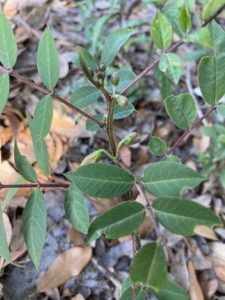Pastures are starting to green up and warm season weeds are growing. This is a good time of year to scout for toxic weeds. It is much easier and less costly to manage weeds when they are young. Waiting for the plants to become established and produce seeds can lead to the spread of hundreds of troublesome weeds in your pastures. Weeds can reduce the grazing area available to livestock, increase the need for supplemental forage, and if toxic, pose a threat to grazing animals.
Some plants contain certain chemical compounds that are toxic to specific species of livestock. The poisoning can be characterized as chronic or acute. Chronic toxicity can happen with prolonged exposure to the plant where toxins accumulate in the animal over time. With acute toxicity, symptoms occur immediately after consumption.
Management is key to reducing the risk of toxic weed exposure. Generally, livestock avoid toxic weeds when there is an adequate amount of good quality forage to graze or supplemental hay available. In winter and early spring, warm season perennial forage quality and quantity is poor, leading to higher incidence of livestock consuming toxic weeds. With the dry year we have had so far, lack of adequate pasture grass can lead livestock to consuming plants (toxic weeds) that they normally would avoid. Other factors that can increase risk of consumption of toxic weeds include animals on overgrazed pastures, young animals or animals moved to a new pasture that are naturally curious, livestock in pens with toxic weeds, weeds present along the fence lines, and livestock that are eating hay with dried toxic weeds in it. Cattle that receive a protein supplement (i.e. – molasses or cubes) in the winter may also be higher risk as they typically seek out roughages when receiving high protein diets. To minimize consumption of toxic weeds, manage stocking rates, offer adequate supplemental forage, and scout and manage weeds.
Routinely scouting pastures and practicing weed management can help prevent livestock from accessing toxic weeds. Some common weeds to keep an eye out for include lantana, black nightshade, oleander, coffee senna, and crotalaria.



Click here to view the Toxic Pasture Plants of Florida poster for identification and control guidance.
 0
0
